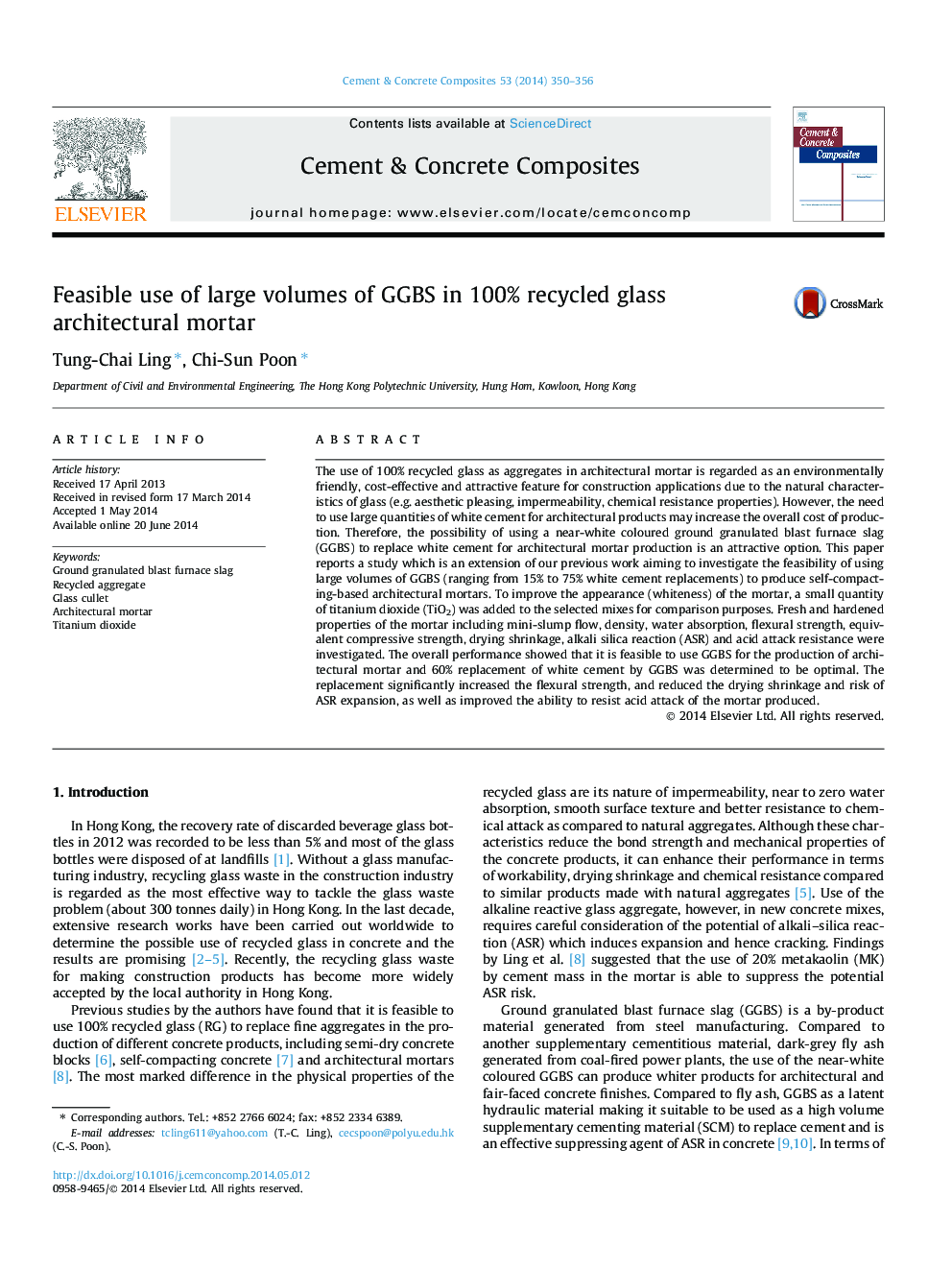| Article ID | Journal | Published Year | Pages | File Type |
|---|---|---|---|---|
| 1454571 | Cement and Concrete Composites | 2014 | 7 Pages |
The use of 100% recycled glass as aggregates in architectural mortar is regarded as an environmentally friendly, cost-effective and attractive feature for construction applications due to the natural characteristics of glass (e.g. aesthetic pleasing, impermeability, chemical resistance properties). However, the need to use large quantities of white cement for architectural products may increase the overall cost of production. Therefore, the possibility of using a near-white coloured ground granulated blast furnace slag (GGBS) to replace white cement for architectural mortar production is an attractive option. This paper reports a study which is an extension of our previous work aiming to investigate the feasibility of using large volumes of GGBS (ranging from 15% to 75% white cement replacements) to produce self-compacting-based architectural mortars. To improve the appearance (whiteness) of the mortar, a small quantity of titanium dioxide (TiO2) was added to the selected mixes for comparison purposes. Fresh and hardened properties of the mortar including mini-slump flow, density, water absorption, flexural strength, equivalent compressive strength, drying shrinkage, alkali silica reaction (ASR) and acid attack resistance were investigated. The overall performance showed that it is feasible to use GGBS for the production of architectural mortar and 60% replacement of white cement by GGBS was determined to be optimal. The replacement significantly increased the flexural strength, and reduced the drying shrinkage and risk of ASR expansion, as well as improved the ability to resist acid attack of the mortar produced.
